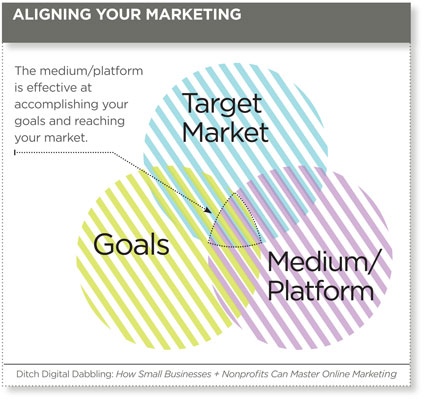
Website nicely burnished? Facebook and LinkedIn accounts up to date? Well, don’t stop now. The next step is a mobile app to put your business or nonprofit in the palm of the consumer’s hand.
“If you walked into Starbucks three years ago, everyone had a laptop. Today, they are all on their phones. Mobile is going to win,” said Matt McKee, president of ROAR, a company that develops applications for mobile phones. Its apps are particularly targeted at nonprofits, such as churches, but he counts small businesses among his customers as well.
About Starbucks, he ought to know; it’s where he works as do many of his employees, who are all virtual, that is, scattered around the country in coffee shops and homes of their own.
ROAR — like the Lion King, you will be heard — launched in 2010. It is now used in 400 churches and other nonprofits nationwide. Why?
Because websites don’t look so good when downloaded by a browser to the small screen. Often, the site is too cluttered for easy reading, hard to navigate with a finger tap, and downloads far too slowly for people on the move. While you want the information from your website and the branding of your organization on your mobile app, you want it there cleanly and quickly.
Another skill to learn or an opportunity for an entrepreneur such as McKee.
For a fixed monthly fee, ROAR provides access to a content management system that pulls together all the social media updates, calendar events, videos, podcasts of sermons, recommended reading, community service opportunities, and prayer requests for s congregation.
For schools, add in updates to sporting events, campus tours, and information about what your child learned that day.
The organization does have to do its part, by updating calendars and posting to social media. ROAR is essentially curating and posting the content on the mobile app by continuously scraping all that information to either — or both — iOS or Android for a set-up fee and a monthly fee that ranges from $200 to $600.
“It doesn’t matter what culture you are, there are three things you always leave the house with,” he says, “your money, your keys, and your mobile phone. There will be more people using a mobile phone than a toothbrush.”
That sounds rather horrid but when you think about access to water in some countries where cell phones are common … he could be right. And if you are thinking of global distribution for your message, he certainly is right.
As is so often the case, McKee’s business is the product of his own experience as a pastor. He believes that churches — and other nonprofits — are about a message and getting that message out in all its forms, from talking about it to acting on it, is the point of a nonprofit community.
“We believe nonprofits are the heartbeat of the community. For-profits may be the head of the community but nonprofits are what truly physically drives a community and reaches people,” McKee says.
The key is making it simple for people to become engaged with a nonprofit that they care about. Mobile does that, with the opportunity for interaction via social media, location-based opportunities, and podcasts to listen to while commuting.
To bring churches onboard the mobile bandwagon, McKee uses more traditional marketing methods in what is perhaps another example of the sluggish rate at which nonprofits are adapting social media to their needs.
ROAR has partnerships with traditional publishing companies, the Southern Baptist Convention, and an arm of the United Methodist Church which encourage their members to ROAR. These partners get a revenue share on set-up fees.
As connection speeds improve, consumers of information, services, and products will do more away from their computers than they do on their computers: Check out the next Starbucks you pass.
If you liked this article, you may also like:
Quick Hists From Social Media For Nonprofits NYC Conference
Local Projects Can Be Great Causes for Small Businesses
Social Media for Small Businesses
The 2011 online marketing survey gathered extensive data and benchmarks about how small businesses and nonprofits use online marketing and whether they are seeing results. For the executive summary, visit Ditch Digital Dabbling: How Small Businesses + Nonprofits Can Master Online Marketing.
